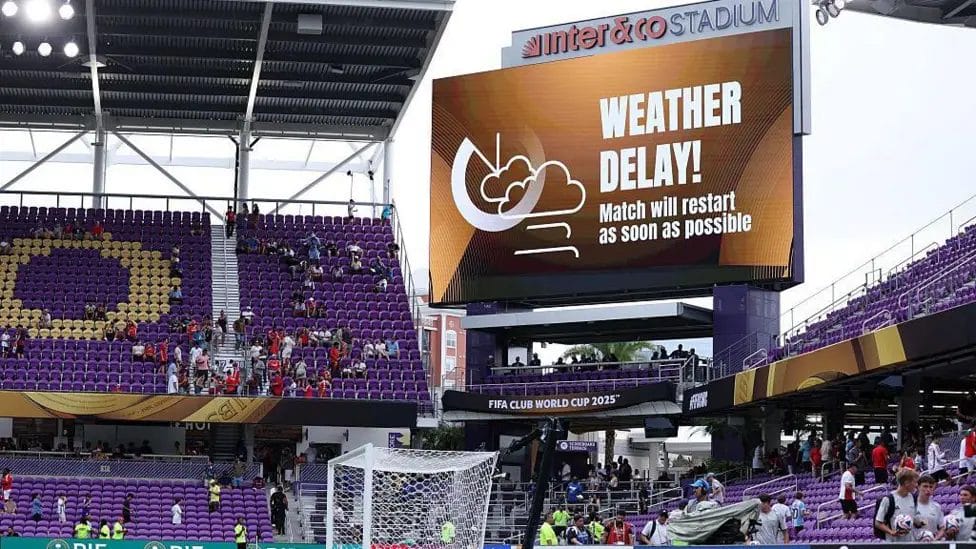The Club World Cup is battling more than just elite opposition on the pitch – teams are now forced to contend with extreme heat and volatile storms as a record-breaking heatwave scorches the eastern United States.
With temperatures soaring past 37°C (99°F) and humidity levels high, managing the weather has become as crucial as managing tactics. Borussia Dortmund left their substitutes in the dressing room for the first half of their game in Cincinnati, shielding them from the punishing sun. Chelsea’s Enzo Maresca, meanwhile, halted training in Philadelphia as heat intensified.
Dortmund coach Niko Kovac warned the climate could be the ultimate decider.
“This tournament might not be won by the best team, but by the one that adapts best to the weather,” said Kovac.
Cooling breaks and ice baths have become standard, while players rely on chilled towels and cold-water foot soaks to endure the matchday heat.
These challenges foreshadow concerns for the 2026 FIFA World Cup, which will be hosted by the United States, Canada, and Mexico. A recent study in the International Journal of Biometeorology revealed that 14 of the 16 host cities regularly exceed the safe thresholds for wet bulb globe temperature (WBGT) – a key measure of heat stress. The authors advised avoiding afternoon kick-offs when heat risk is highest.
Thunderstorms have added further disruption. Boca Juniors vs Auckland City became the fifth match this tournament delayed by lightning, under U.S. safety protocols halting play within a 16-kilometer (10-mile) lightning radius. Benfica faced a nearly two-hour delay earlier in the tournament due to similar conditions.
Ben Schott of the U.S. National Weather Service, who advises FIFA, emphasized these conditions are typical for American summers, and not an anomaly:
“We’re breaking records, but that happens nearly every summer. Expect similar conditions for the World Cup next year.”
He credited improved forecasting for helping organizers plan more effectively, noting that 1994’s U.S.-hosted World Cup experienced sweltering heat — but no lightning delays due to less advanced monitoring.
As Club World Cup players battle the elements now, FIFA faces mounting pressure to reexamine kickoff times and safety protocols to protect players and fans ahead of the 2026 tournament.










